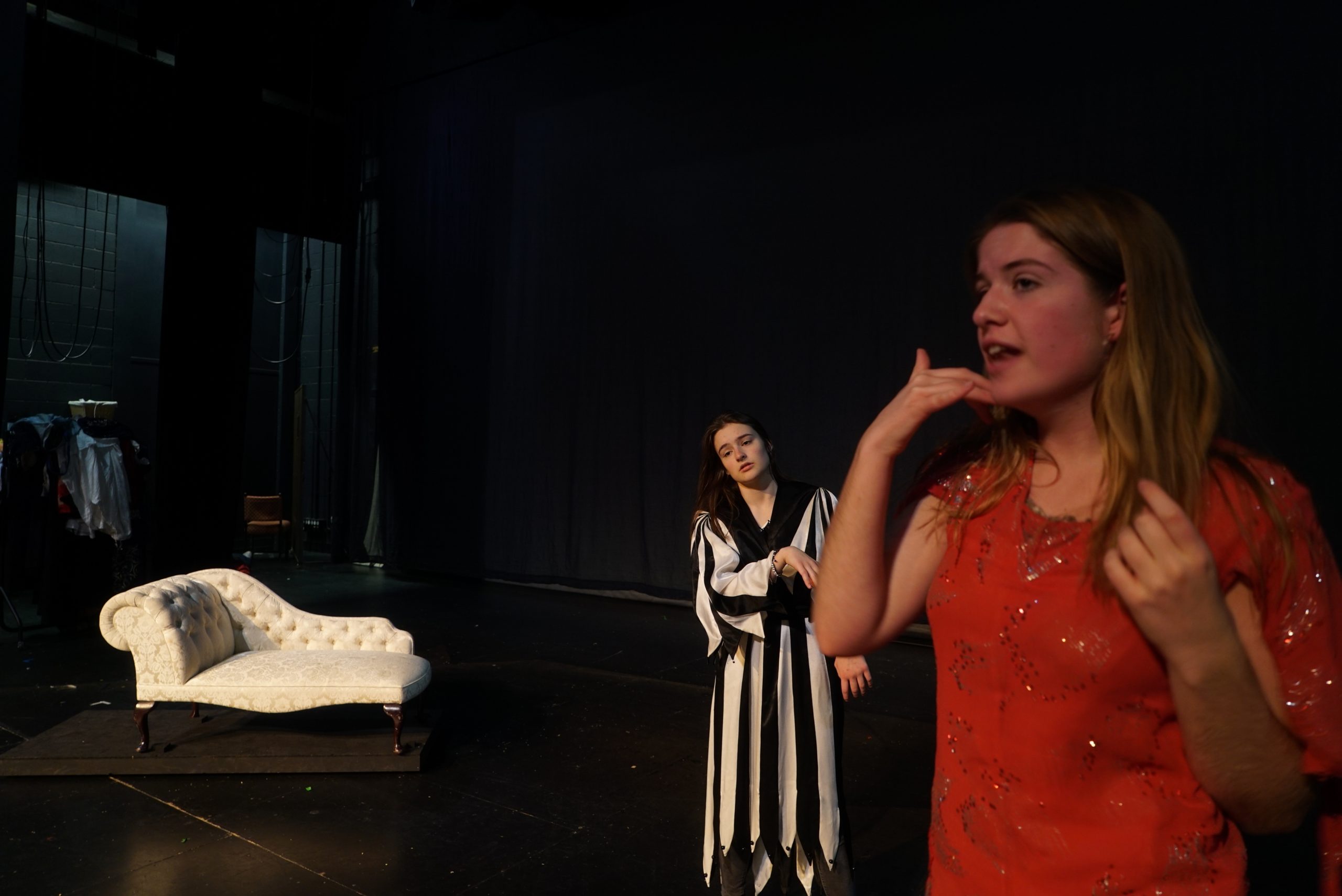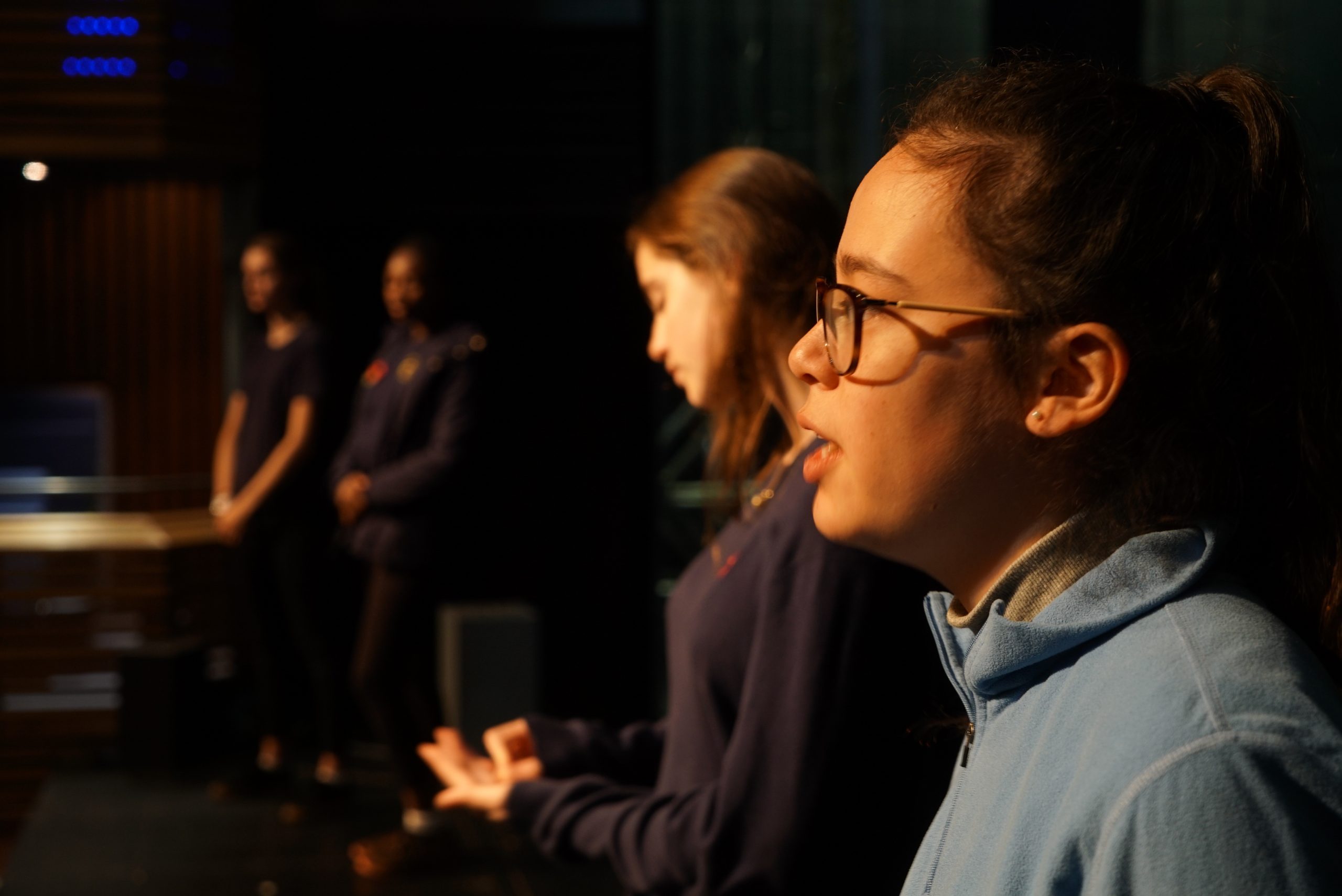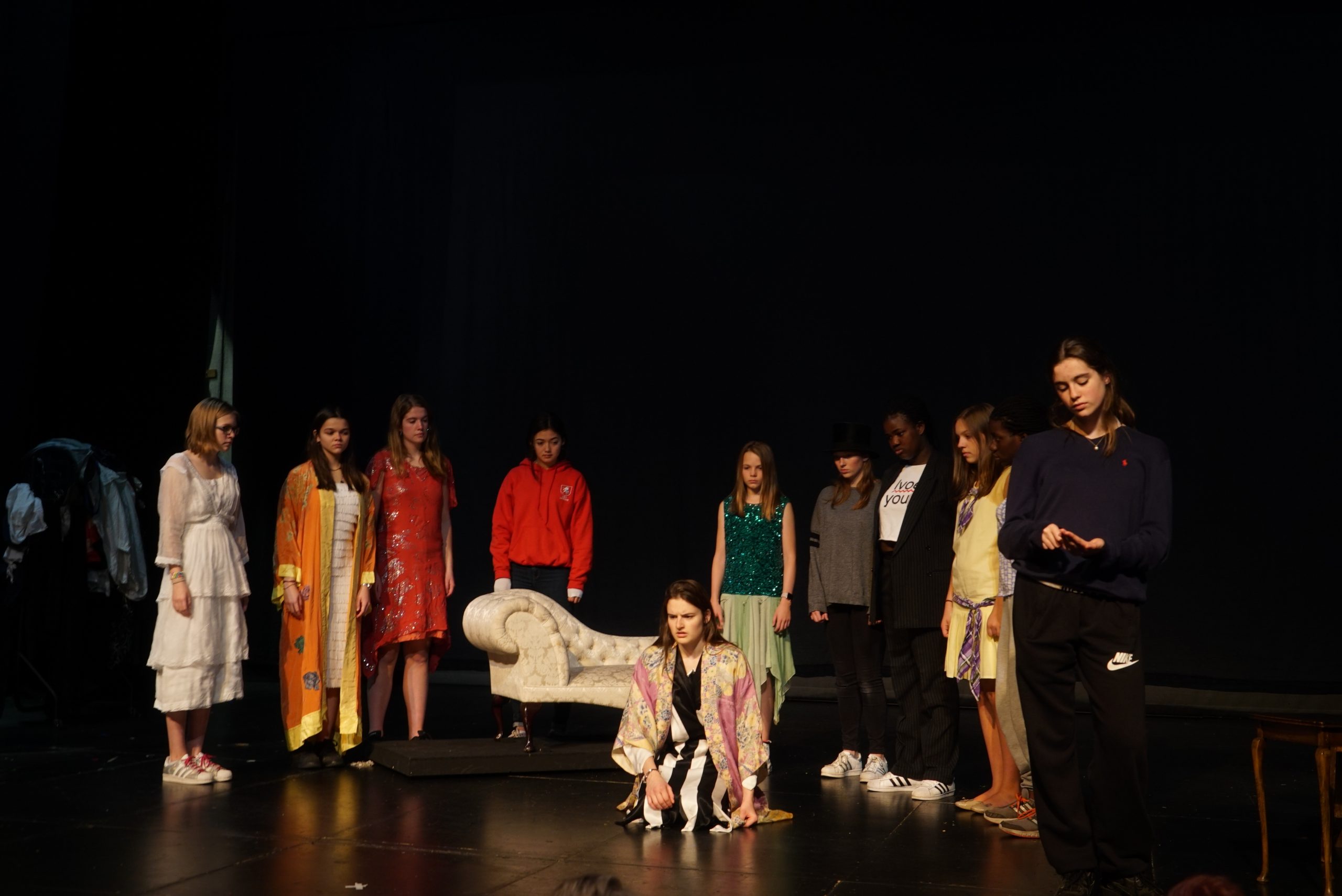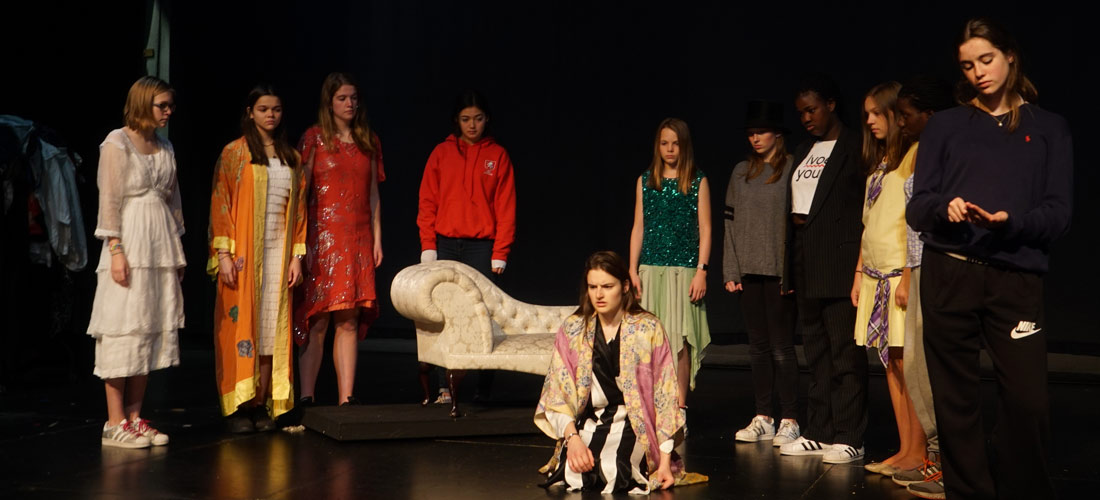Directing / Producing
For my EPQ I wrote produced and directed a play based on the tragic life of Clara Bow, called The Original It Girl.
This play was entirely my creation with my roles including:
- Writing the script
- Writing in any and all tech queues
- Discussing with the technicians exactly what I wanted
- Auditioning potential actresses
- Selecting props
- Costume selection
- Programme design
- Directing
- Working with a band to organise live music
Nothing that happened on the stage happened without my organising.
Here is the blurb that appeared on the Programme:
Discover the shocking, glamorous and tragic true story of The Original It Girl, Clara Bow. A documentary onstage that will immerse you in the roaring 1920’s with music, scandal, threats, deceit and love. Clara came from nothing and lived in severe poverty with a mentally unstable mother and a drunken father and yet this little girl made her mark well and truly on Hollywood. She had made 48 films by the age of 28 and was the embodiment of what it meant to be a flapper girl. Clara was the first person to have ‘IT’ and she drove everybody wild, everyone wanted her, perhaps too much. The truth of Hollywood isn’t what people see on the surface, and in the words of Clara Bow, ‘A sex symbol is a heavy load to carry when one is tired, hurt and bewildered.’
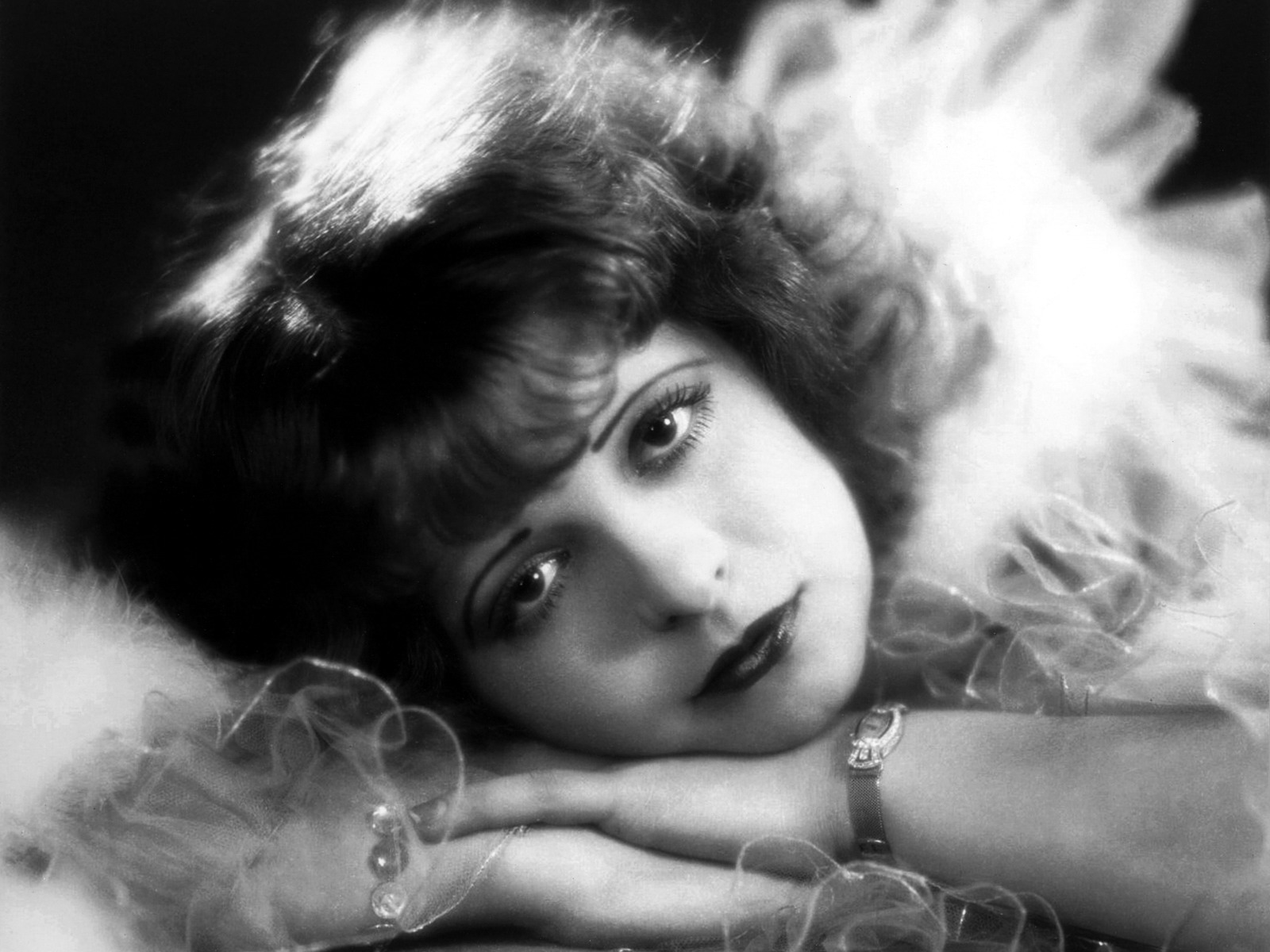
A short clip of band practise:
Here is the detailed description of my work as written by me just after the production’s debut:
I first stumbled across the name Clara Bow two years ago. Out of nowhere the idea of the roaring 20s came into my head and, before I knew it, I was reading countless biographies of those who embodied that era; however none stuck out to me as significantly remarkable until Clara. Clara Bow came from an unstable, poverty stricken family; the only surviving child of a schizophrenic mother and a drunken father. Once she found out she had a part in a film she awoke to her mother threatening to kill her with a butcher’s knife shouting, “you’d be better off dead”, as Clara wrestled her into a closet. As the first “It Girl”, Clara was adored by the masses and was constantly in demand, a factor leading to scandal, mental breakdown and her expulsion from Hollywood by the age of 28. She married and was happy for a time but her husband’s career in the spotlight drove her away and she lived out the rest of her life alone, undergoing shock therapy, occasionally visited by her sons.
The chance came for me to apply to direct my own production, having presented my ideas about tech, costume, cast numbers, set and staging alongside a planned budget. I set about researching the key events I wanted to include and began writing my script. This took more time than expected and I ran over my personal deadline. The audition process was also slower than anticipated, with a lack of advertising being a considerable hindrance; this wasn’t helped by how few people recognised who Clara Bow was and the fact I provided only a few auditions pieces not an entire script for people to apply with.
Clara Bow was one of Hollywood’s biggest names, a star, a sensation, and yet when I said I would be writing a play based on her life, the majority of people looked at me clueless. Determined to share her story, with a wider number of people, I began researching, writing and preparing to direct my own play entirely from scratch. I was naïve enough to expect a rather straightforward process only to learn that much compromise is required in order to get a show onstage at all. My initial idea changed vastly compared to what the audience was presented with, and yet I achieved my aim of creating a historically accurate piece, which incorporated an entire life story.
My original idea was a documentary onstage with four characters sitting downstage, taking on the personas of actors and actresses from the 1920s, and reflecting upon their memories and experiences with Clara. In theory this was a very effective way of telling people about events which otherwise might have been overlooked, however, in reality, with such little physical interaction between these characters and the rest, the style became too narrative and resulted in Clara having the least to say of all, simply miming the actions spoken about. As a result, half way through the overall rehearsal process, I rewrote the script, changing lines from the past into the present tense where possible, and instantly the live action onstage increased considerably, changing the tone of the play from reflective into a much more powerful story. In the initial script Schulberg talks about the amount of work Clara is contracted for, as if she isn’t onstage next to him, and Clara was left to mime pressure talked of. This was changed into a conversation, with Schulberg telling Clara directly what she has to do, with Clara interjecting so the audience could see her reaction to the demanding position she was in.
As the original four narrators brought so much extra detail to the story (that could not be ignored,) my new approach was to integrate them into the scenes. I used them to enhance the story by filling in extra detail not easily shoehorned into normal conversation, such as when ‘David’ discusses her childhood friend burning to death in her arms. Two of the initial narrators retained their parts as actresses from the 1920s, however they were able to discreetly move in and out of scenes by blending into the background of party and brothel scenes for instance and thus they were not obvious narrators unless they needed to be, such as when acting as live presenters.
The two male narrators on the other hand were very conspicuous, unless within the ensemble, as they took on the role of scientists. As Clara underwent shock therapy in her later years, I used the narrators to discuss her experiences while watching her, like a case study they were monitoring. The use of electricity noises when they entered and exited the stage combined with Clara or Young Clara twitching slightly subtly reflected the idea of her being tested through shock therapy. ‘Insulin Coma Therapy’ and ‘convulsive therapy… were the first successful treatments for schizophrenia’ and had come into the US ‘at the end of the 1930s’.[1] The treatments were a very significant part of Clara’s later life. Due to changing my chosen format for the play I came to the realisation that things will not always be straightforward, and that compromise between the image in your head and the reality is sometimes necessary for the sake of your audience.
Another problem I encountered was that of restricted artistic license. Having been in many productions I know that some of the best scenes are non-naturalistic, or have non-naturalistic aspects. Nevertheless, as this was a historical enquiry, I had little room to maneuver. This issue was very frustrating, with regards to discovering the extent of my directorial abilities and creating interesting visual scenes for the audience to engage with. I had imagined a live band for one of the party scenes to provide a different dynamic to the show, acting as a turning point between the glamour of Hollywood and the crushing affects it had on those on the inside, especially women. The idea had been discussed with those who would be able to organise a small band, a song was decided and staging had been organised. However, with three weeks to go, this idea became problematic, starting with the band having to be set off stage instead of on. It was decided that setting the musician’s kit on stage for the entire performance would cause problems with space availability considering that the cast had not rehearsed with the band. Furthermore, musicians who had agreed three months earlier to organise the band decided the music would sound under rehearsed and amateur, and so suggested I go in a different direction. This was a difficult compromise as I had little control over it however it was agreed that a smaller group of musicians would pre-record the song previously chosen, so it still had a more authentic and less auto-tuned sound to play behind the actress who was still singing live. Instead of letting this hinder the progress of the performance, we created the next best scenario.
In order to link the piece together from start to finish and draw attention to the significant events in her life, I pre-recorded the actress playing Clara breathing very heavily several times and looped these together. This was significant because the sound featured in every dramatic and stressful scene, linking them as collective reasons for her mental breakdown and revealing the dark side of her life. I established the connection between the sound and her desperation by opening the play with a freeze-frame of her mother, holding a knife to her throat, while the heavy breathing began to crescendo to a point where it was uncomfortable for the audience. This opening only lasted 5 seconds, however the affect it had in instantly demonstrating the tumultuous life being dealt with meant that whenever the breathing was heard, however quietly, the audience were able to register the internal anxiety of Clara.
However, aside from dealing with the drama onstage, I also had to organise everything that went towards the final artifact starting with driving to the Oast theatre in Tonbridge to organise costumes. This was a much more arduous task than first thought as it involved working out costume changes, which often meant switching gender, finding realistic accessories and digging through rows of costumes to discover what was already available to me for free. Following this, programmes had to be made, pictures taken, and director’s notes written while I also had to inform the technicians of exactly how I wanted each sound and lighting effect to work.
Overall this has been an incredible opportunity, from the planning, through the stages of writing and directing to performance night. I had this idelised image in my head of a relatively straightforward journey from beginning to end, mainly thought ahead to performance night and forgot the middle bits. But since that naïve time I have learned that creating your own project from scratch comes with lots of hard work, determination and most importantly a much-needed support system of peers and cast-members to keep you sane.
[1] http://www.pbs.org/wgbh/amex/nash/filmmore/ps_ict.html
Dress rehearsal pictures:
